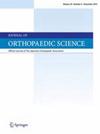影响日本激励政策下股骨近端骨折患者实现早期手术的因素。
IF 1.5
4区 医学
Q3 ORTHOPEDICS
引用次数: 0
摘要
背景:老年患者的股骨近端骨折是骨科的一大难题,往往会导致严重的功能障碍。早期手术干预对于改善患者康复和整体健康效果至关重要。因此,日本厚生劳动省于 2022 年 4 月启动了一项报销政策,鼓励对年龄≥75 岁的此类骨折患者尽早进行手术治疗。本研究调查了该政策对日本早期手术率的影响,并确定了影响手术干预时机的因素:我们对 2022 年 4 月至 2023 年 3 月期间在我院接受股骨近端骨折手术的患者数据进行了回顾性分析。结果:在192例患者中,有152例患者的手术时间≤48小时,1例患者的手术时间大于48小时:在 192 名患者中,有 152 人被纳入研究。其中,38%的患者接受了早期手术(≤48小时),15%的患者伤后超过48小时才入院。两组患者的入院途径和居住地类型存在显著差异。≤48小时组从受伤到入院和手术的时间间隔短于>48小时组。入院流程、星期和C反应蛋白水平等因素对手术时间有显著影响:结论:日本引入早期手术激励机制后,38%的股骨近端骨折患者在受伤后48小时内接受了手术。导致患者未能尽早接受手术的因素包括从其他医院转院、周末住院以及 CRP 水平升高。这些研究结果表明,仅靠医院的努力很难在受伤后48小时内完成手术,如果将时间标准改为 "入院手术",可能会更加合适。本文章由计算机程序翻译,如有差异,请以英文原文为准。
Factors influencing the achievement of early surgery in proximal femoral fractures under a Japanese incentive policy
Background
Proximal femoral fractures in geriatric patients are a major challenge in orthopedics, often leading to major functional impairment. Early surgical intervention is crucial for improving patient recovery and overall health outcomes. Thus, Japan's Ministry of Health, Labour and Welfare initiated a reimbursement policy in April 2022 to encourage early surgery for these fractures in patients aged ≥75 years. This study investigated the impact of this policy on early surgery rates in Japan and identified factors influencing the timing of surgical interventions.
Methods
We retrospectively analyzed the data of patients who underwent surgery for proximal femoral fractures at our institution between April 2022 and March 2023. Patients were categorized into two groups based on the timing of surgery relative to the injury: ≤48 h and >48 h. Demographic and clinical data, including age, sex, fracture type, and various health- and admission-related factors, were assessed.
Results
Of the 192 patients, 152 were included in the study. Among them, 38% underwent early surgery (≤48 h), and 15% of the patients arrived more than 48 h post-injury. Significant differences were found in admission routes and residence types between the groups. The ≤48 h group had shorter intervals from injury to admission and surgery than the >48 h group. Factors such as the admission process, day of the week, and C-reactive protein levels significantly influenced the timing of surgery.
Conclusions
After introducing incentives for early surgery in Japan, 38% of patients with proximal femoral fractures underwent surgery within 48 h of injury. Factors contributing to patients not receiving early surgery included transport from another hospital, weekend hospitalization, and elevated CRP levels. These findings suggest that achieving surgery within 48 h of injury is challenging through hospital efforts alone, and the time criteria might be more appropriate if changed to “admission to surgery.”
求助全文
通过发布文献求助,成功后即可免费获取论文全文。
去求助
来源期刊

Journal of Orthopaedic Science
医学-整形外科
CiteScore
3.00
自引率
0.00%
发文量
290
审稿时长
90 days
期刊介绍:
The Journal of Orthopaedic Science is the official peer-reviewed journal of the Japanese Orthopaedic Association. The journal publishes the latest researches and topical debates in all fields of clinical and experimental orthopaedics, including musculoskeletal medicine, sports medicine, locomotive syndrome, trauma, paediatrics, oncology and biomaterials, as well as basic researches.
 求助内容:
求助内容: 应助结果提醒方式:
应助结果提醒方式:


